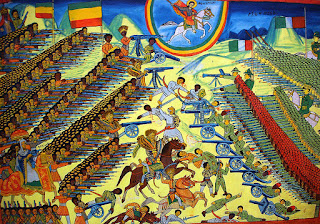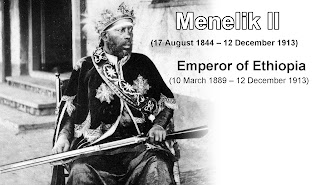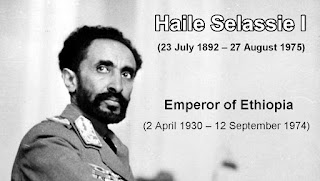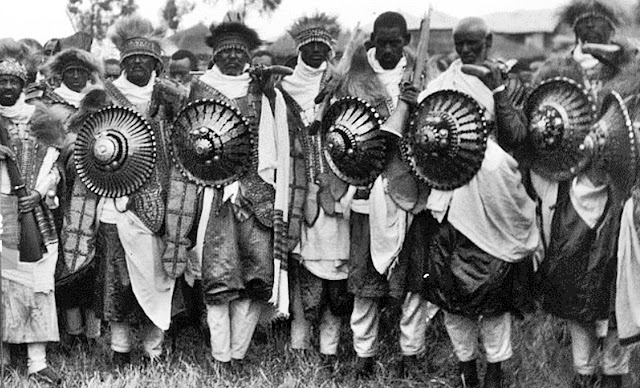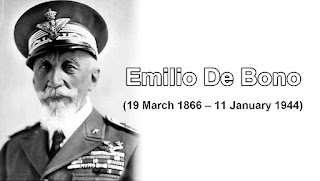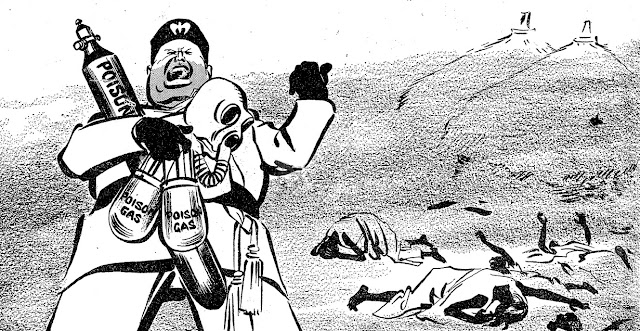Monday, April 3, 2023
Italian invasion of Ethiopia
Italy invasion of Ethiopia in 1935, also known as The Second Italo-Ethiopian War was a conflict fought between the armed forces of the Kingdom of Italy and the armed forces of the Ethiopian Empire. The war resulted in the military occupation of Ethiopia.
Before the war, Ethiopia was one of only two countries, the other being Liberia, in Africa that had not been colonized by a European power. Also, Ethiopia was the only country in Africa to repel a foreign European invasion, the first Italian invasion in 1895-1896. This invasion was defeated at the battle of Adwa in northern Ethiopia on the border of Eritrea by a force of 100,000 men under emperor Menelik II.
Ethiopia during the Italian invasion was under the rule of Emperor Haile Selassie, whereas Italy was under the rule of Benito Mussolini.
The initial conflict that sparked the war took place at Wal Wal, an oasis in the Ogaden Desert in 1934. On November 22, 1934, Italian forces marched fifty miles into Ethiopia and clashed with Ethiopian troops at Wal Wal, leaving 107 Ethiopians and 50 Italians and Somalis dead. The League of Nations evaluated the conflict and exonerated both nations, although Italy was the clear aggressor.
Great Britain and France, which dominated the League, hoped to prevent Italy from becoming an ally of Nazi Germany. Taking advantage of this situation, Mussolini signed agreements with France and the United Kingdom, thus isolating Ethiopia and forcing it to face Italy alone. Upset with Italy's initial objections to the Anschluss in Austria, Germany sent material support to the Ethiopians. This included three airplanes, 10,000 Mauser rifles, and 10 million rounds of ammunition.
In a few months 685,000 Italian soldiers arrived in East Africa. There were also 400,000 Italian soldiers in Eritrea and 285,000 in Italian Somaliland before the new divisions arrived. The equipment for the build-up alone included 6,000 machine guns, 2,000 pieces of artillery, 599 tanks, and 390 aircraft. Before these arrived, the Italians had 3,300 machine guns, 275 artillery pieces, 200 tankettes, and 205 aircraft.
According to Italian estimates, on the eve of hostilities the Ethiopians had an army of 350,000 - 760,000 men. But only about one-quarter of this army had any kind of military training and the men were armed with 400,000 rifles of every type and in every kind of condition. The new recruits consisted of around 500,000 men, some of whom were armed with nothing more than spears and bows. The Ethiopian armies were poorly equipped. They had 800 light and 250 heavy guns, 234 antiquated pieces of artillery mounted on rigid gun carriages, some 300 trucks, 7 Ford A-based armored cars and 4 Fiat 3000 tanks of the First World War age. In all, the air force consisted of 13 aircraft and four pilots at the outbreak of the war.
The war began on October 3, 1935, when General Emilio De Bono marched his troops over the Mareb River into Ethiopia before Italy officially issued a declaration of war. Emperor Selassie instead declared war on Italy, but the invading forces advanced rapidly into northern Ethiopia, taking both Adigrat and Adowa by October 6. The latter was where the Italians had been defeated in 1896.
Also General Rodolfo Graziani attacked Ethiopia from south implementing Milan Plan. Objectives of Milan Plan were to remove Ethiopian forces from various frontier posts and to test the reaction to a series of probes all along the southern front.
By mid-October, Italian troops had taken the ancient city of Axum, and by November 8, they had conquered Mek’ele as well. Nonetheless, Mussolini was impatient with what he called De Bono’s slow advance and replaced him with Field Marshal Pietro Badoglio.
In an attempt to test Italy’s new commander and rally his own nation, Selassie ordered a Christmas Offensive, counterattack against the Italians. Although the Ethiopians were initially successful and won the Battle of Dembeguina Pass where they defeated one thousand Eritrean troops under Italian command, the Italians continued their steady advance across the nation.
On 26 December, Badoglio asked for and was given permission to use chemical warfare agents such as mustard gas. The Italians delivered the poison gas by special artillery canisters and with bombers of the Italian Air Force. While the poorly equipped Ethiopians experienced some success against modern weaponry, they did not understand the "terrible rain that burned and killed."
On 20 January, the beginning of the inconclusive First Battle of Tembien marked the end of the Ethiopian "Christmas Offensive" and also marked a shift of the offensive back to the Italians. In early February, the Italians captured Amba Aradam on northern front. On 31 March, the last Ethiopian army on the northern front was destroyed during the Battle of Maychew.
After a lull in February 1936, the Italians in the south prepared a major thrust towards the city of Harar. On 22 March, the Italian Air Force bombed Harar and Jijiga as a prelude. Both cities were reduced to ruins even though Harar had been declared an "open city". In the Battle of Ogaden (14–25 April), italians defeat the last Ethiopian army left.
On May 5, 1936, they took the capital Addis Ababa, and Emperor Haile Selassie was exiled and fled to Palestine and eventually to England. Mussolini then named King Victor Emmanuel the 3rd of Italy as the Emperor of Ethiopia. On 10 May 1936, in Ethiopia Italian troops from the northern front and from the southern front linked up at Dire Dawa. On 1 June Italy officially merged Ethiopia with Eritrea and Italian Somaliland, calling the new state Africa Orientale Italiana. Italy declared the country pacified in December 1936. Over 9,500 Italian soldiers died during the war, while Ethiopians lost over 275,000.
